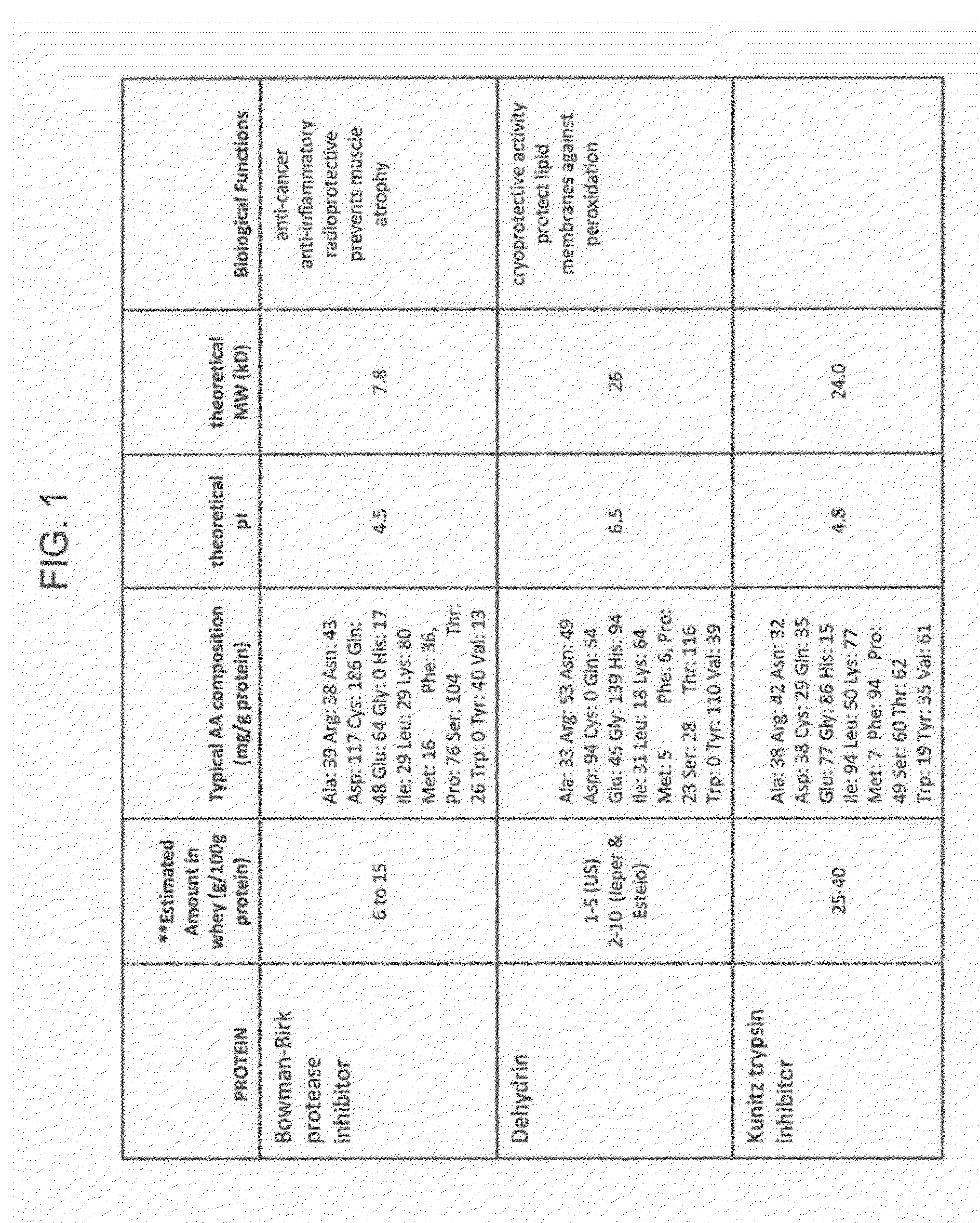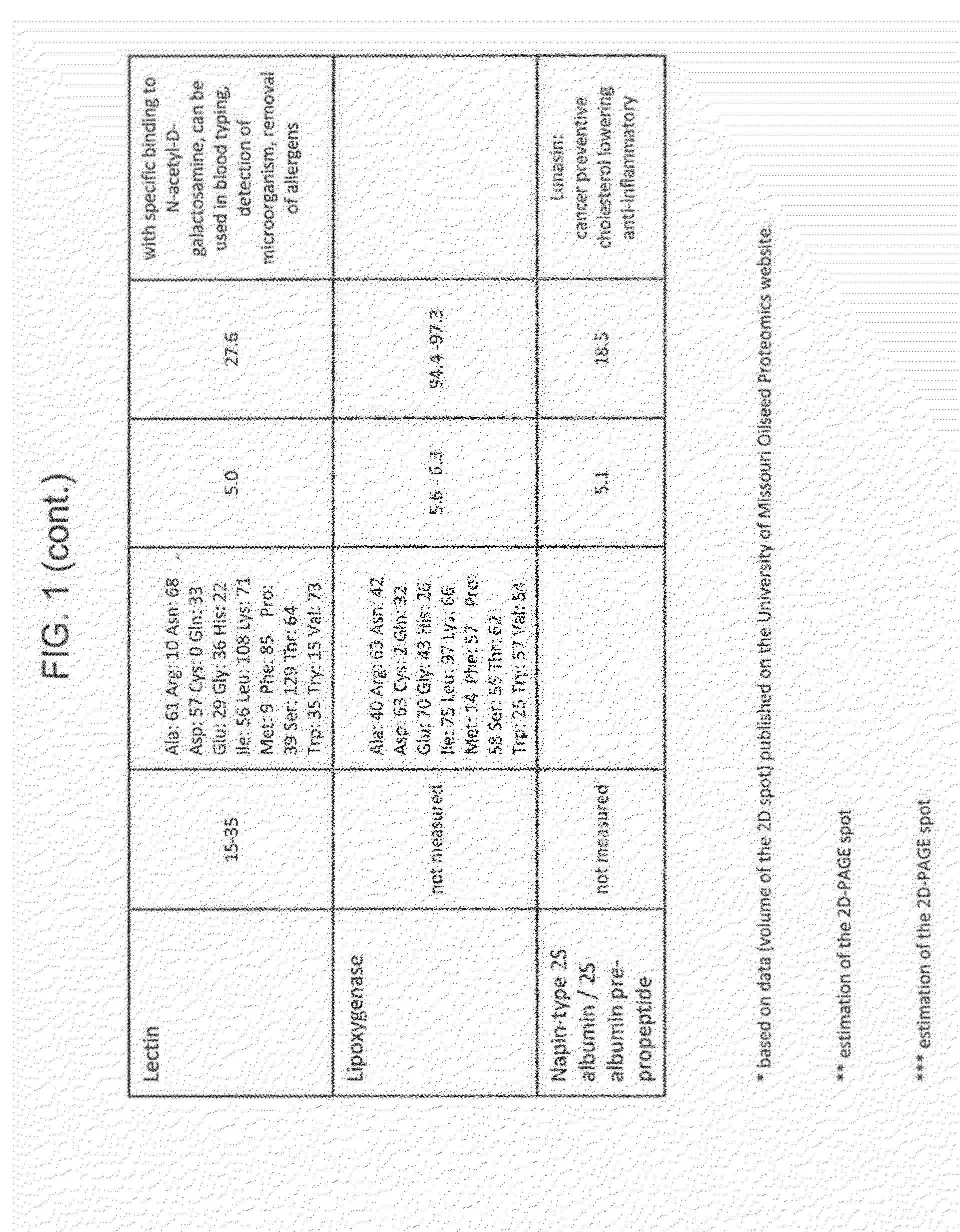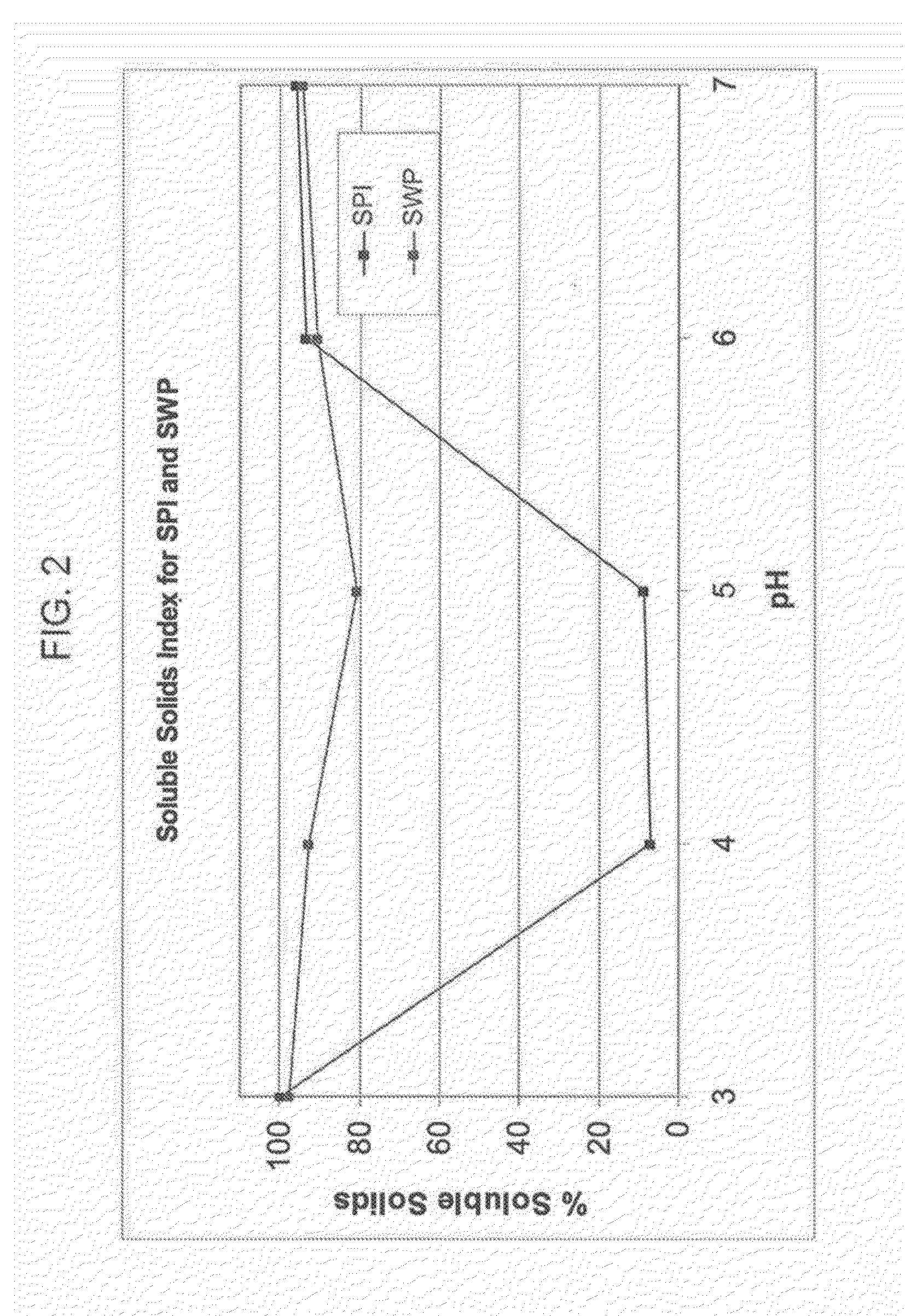Dessert compositions comprising soy whey proteins that have been isolated from processing streams
a technology of soy whey protein and digestible composition, which is applied in the field of digestible compositions, can solve the problems of large portion of the population not being able to consume dairy-based frozen confections, most expensive to obtain, and not historically nutritious products of digestible foods, so as to reduce the foaming capacity, increase the amount of foam, and the effect of reducing the foaming capacity
- Summary
- Abstract
- Description
- Claims
- Application Information
AI Technical Summary
Benefits of technology
Problems solved by technology
Method used
Image
Examples
example 1
Recovery and Fractionation of Soy Whey Protein from Aqueous Soy Whey Using Novel Membrane Process
[0246]145 liters of aqueous raw soy whey (not pre-treated) with a total solids content of 3.7% and dry basis protein content of 19.8% was microfiltered using two different membranes in an OPTISEP® 7000 module, manufactured by SmartFlow Technologies. The first membrane, BTS-25, was a polysulfone construction with 0.5 um pore size manufactured by Pall. Aqueous soy whey was concentrated to a 1.6× factor, at an average flux of 30 liters / meter2 / hr (LMH). The concentrated aqueous soy whey was then passed through a modified polysulfone microfiltration membrane, MPS 0.45, manufactured by Pall. The aqueous soy whey was concentrated from 1.6× to 11× at an average flux of 28 LMH.
[0247]Permeate from the microfiltration process, 132 liters total, was then introduced into an OPTISEP® 7000 module with ultrafiltration membranes, RC100, which are 100 kDa regenerated cellulose membranes manufactured by Mi...
example 2
Recovery and Fractionation of Soy Whey Protein from Soy Molasses Using Novel Membrane Process
[0250]61.7 liters of soy molasses with a total solids content of 62.7% and dry basis protein content of 18.5% was diluted with 61.7 liters of water prior to microfiltration. The diluted soy molasses was then microfiltered using an OPTISEP® 7000 module, manufactured by SmartFlow Technologies. The diluted soy molasses passed through a modified polysulfone microfiltration membrane, MPS 0.45, manufactured by Pall. The diluted soy molasses was concentrated to a 1.3× factor, at an average flux of 6 liters / meter2 / hr (LMH).
[0251]Permeate from the microfiltration process, 25 liters total, was then introduced into an OPTISEP® 7000 module with ultrafiltration membranes, RC100, which are 100 kDa regenerated cellulose membranes manufactured by Microdyn-Nadir. The microfiltered diluted soy molasses was diafiltered with 2 volumes of water prior to being concentrated to 7.6× at an average flux of 20 LMH, re...
example 3
Capture of Bulk Soy Whey Protein from Defatted Soy Flour Extract
[0254]Defatted soy flour (DSF) was extracted by adding a 15:1 ratio of water to DSF at a pH of 7.8 and stirring for 20 minutes prior to filtration. The extract was microfiltered using an OPTISEP® 800 module, manufactured by SmartFlow Technologies. The microfiltration membrane, MMM-0.8, was a polysulfone and polyvinylpropylene construction with 0.8 um pore size manufactured by Pall. Aqueous soy extract was concentrated to a 2.0× factor, at an average flux of 29 liters / meter2 / hr (LMH). Permeate from the microfiltration process was then introduced into an OPTISEP® 800 module with ultrafiltration membranes, RC100, which are 100 kDa regenerated cellulose membranes manufactured by Microdyn-Nadir. The microfiltered aqueous soy extract was concentrated to about 6.3× at an average flux rate of 50 LMH. The final retentate measured 84.7% dry basis protein content.
PUM
 Login to View More
Login to View More Abstract
Description
Claims
Application Information
 Login to View More
Login to View More - R&D
- Intellectual Property
- Life Sciences
- Materials
- Tech Scout
- Unparalleled Data Quality
- Higher Quality Content
- 60% Fewer Hallucinations
Browse by: Latest US Patents, China's latest patents, Technical Efficacy Thesaurus, Application Domain, Technology Topic, Popular Technical Reports.
© 2025 PatSnap. All rights reserved.Legal|Privacy policy|Modern Slavery Act Transparency Statement|Sitemap|About US| Contact US: help@patsnap.com



